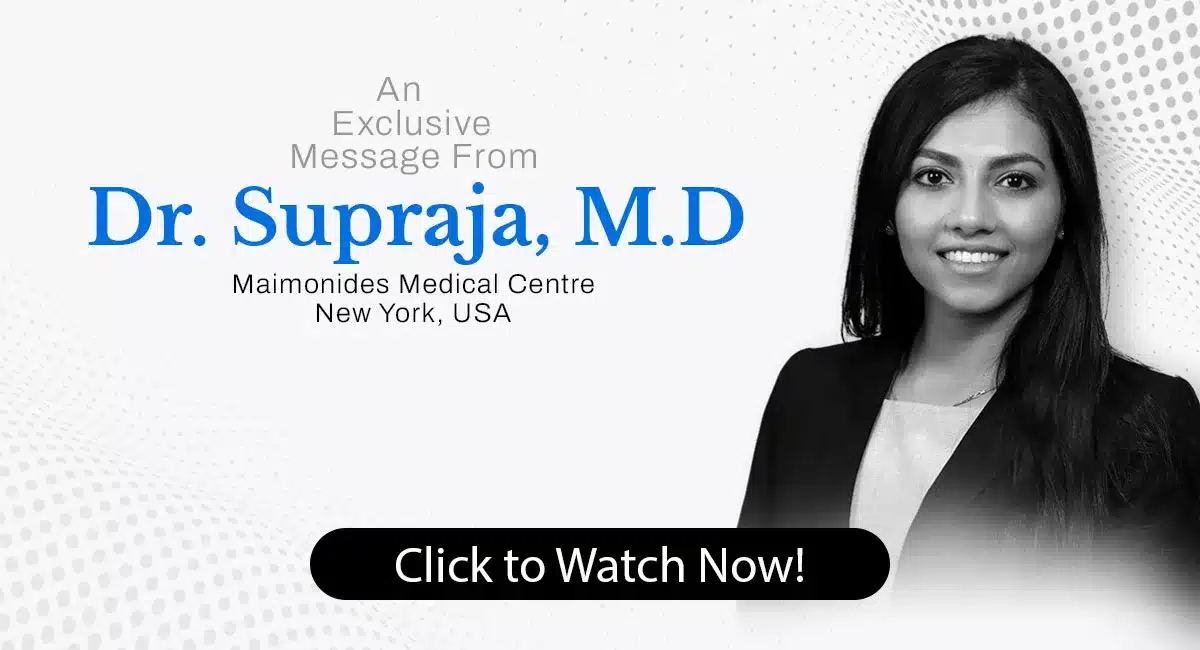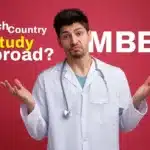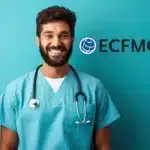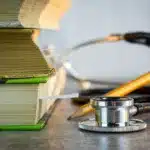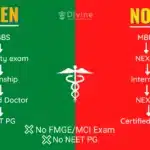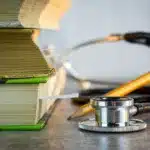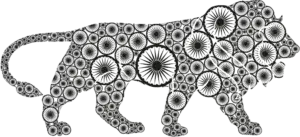Embarking on the journey to becoming a licensed physician in the United States is a challenging yet rewarding pathway for International Medical Graduates (IMGs), particularly those from India. This comprehensive guide aims to shed light on the essential steps and strategic considerations that Indian medical graduates must undertake to successfully secure a residency and advance their medical careers in the USA. From understanding the USMLE pathway to navigating the complexities of the residency application process, this guide provides invaluable insights and practical advice for IMGs aspiring to practice medicine in the United States.
Key Takeaways
- IMGs must pass the USMLE Steps 1, 2 CK, and 2 CS to be eligible for residency programs in the USA, with Step 3 often integrated into the residency.
- Hands-on clinical rotations in the USA are critical for IMGs to gain experience in the American healthcare system and enhance residency applications.
- Transitioning from an Indian MBBS to a US MD requires careful planning, understanding of the US medical education system, and building a professional network.
- Financial and academic considerations are significant for Indian students, with high costs of education and the need for strategic financial planning.
- Navigating the residency application process is highly competitive and requires a well-rounded profile, including strong LORs and US clinical experience.
Understanding the USMLE Pathway

Overview of USMLE Steps 1, 2, and 3
The journey to practicing medicine in the United States for International Medical Graduates (IMGs) involves a series of examinations known as the United States Medical Licensing Examination (USMLE). The USMLE assesses a physician’s ability to apply knowledge, concepts, and principles crucial for effective patient care. The pathway includes three key steps:
- USMLE Step 1: Focuses on basic medical sciences and is typically taken after the second year of medical school.
- USMLE Step 2 CK (Clinical Knowledge): Tests clinical knowledge and is usually completed during the fourth year of medical school.
- USMLE Step 2 CS (Clinical Skills): Evaluates clinical skills through simulated patient interactions and is also taken during the fourth year.
- USMLE Step 3: Taken during or after the first year of residency, this step assesses the ability to practice medicine unsupervised.
Success in these exams is pivotal for IMGs as it not only validates their medical knowledge but also opens doors to residency programs in the USA. Strategic preparation and timing are essential, with many aiming to complete Step 1 before their third-year exams to ensure adequate preparation time.
Each step of the USMLE is designed to build upon the previous one, ensuring that IMGs are thoroughly evaluated on their readiness to enter the highly competitive field of medicine in the USA. The timeline for these exams is crucial, and it is recommended to finish Step 1 with 2-3 months to spare in the third year, allowing for focused study time for both the USMLE and medical school exams.
Strategies for Successful Exam Preparation
For Indian MBBS graduates aiming for a medical career in the USA, a well-structured approach to USMLE exam preparation is crucial. Diversifying study methods beyond simple repetition can lead to more effective learning. The seven-perspective method, which includes consulting various resources such as textbooks, teacher slides, and online flashcards, is recommended for a comprehensive understanding of the subject matter.
Incorporating a strategic study plan early in the medical school curriculum is essential. Here’s a suggested timeline for USMLE preparation:
- Year 2: Take USMLE Step 1
- Year 3: Clinical rotations and preparation for USMLE Step 2
- Year 4: Take USMLE Step 2
- Residency: Take USMLE Step 3 after the first year
Early and consistent preparation, integrated with medical school curricula, not only prepares students for the exams but also for their future roles as independent practitioners.
Medical schools in the USA often provide structured support for USMLE preparation, including access to resources, practice exams, and guidance from faculty experienced in the USMLE process. This support system is designed to ensure that students meet the high standards of the medical profession in the United States.
Integrating USMLE Preparation with Medical School Curricula
Integrating USMLE preparation into medical school curricula is a strategic approach that can significantly enhance a student’s readiness for the exams and their future medical career. Early and consistent preparation, aligned with the medical school curriculum, lays a solid foundation for both the USMLE and clinical practice. Students should start with the preclinical subjects of Step 1 to build a strong base before moving on to the clinical subjects of Step 2.
Here’s a suggested timeline for USMLE preparation during medical school:
- Year 1: Focus on basic sciences and foundational medical knowledge.
- Year 2: Take USMLE Step 1 after mastering preclinical subjects.
- Year 3: Engage in clinical rotations while preparing for USMLE Step 2.
- Year 4: Complete USMLE Step 2 and begin residency applications.
Medical schools in the USA often provide structured support for USMLE preparation, including access to resources, practice exams, and guidance from faculty experienced in the USMLE process. This comprehensive support system ensures that students are well-equipped to meet the high standards of the medical profession in the United States.
Gaining Clinical Experience in the USA

Importance of Hands-on Clinical Rotations
Hands-on clinical rotations are a cornerstone of medical education for International Medical Graduates (IMGs) aiming to practice in the United States. Clinical rotations provide IMGs with critical exposure to the American healthcare system, which is essential for both personal growth and enhancing their residency applications. These rotations are not just about observing; they are about actively participating in patient care, which helps to refine clinical skills and build professional competence.
- Exposure to American healthcare
- Boost residency applications
- Enhance clinical skills
Choosing the right country for MBBS studies is crucial for a successful medical career. This decision impacts the quality and relevance of clinical training, which in turn influences residency opportunities.
Clinical rotations in the U.S. are also an opportunity to obtain strong letters of recommendation from U.S. physicians. These letters are highly valued by residency program directors as they reflect an IMG’s clinical competence and interpersonal skills within the U.S. healthcare context. Moreover, rotations serve as a platform for networking with healthcare professionals, which can be invaluable for securing residency interviews and future collaborations.
- Obtain strong letters of recommendation
- Valuable networking opportunities
- Serve as an extended interview for residency programs
In summary, hands-on clinical rotations are indispensable for IMGs, providing them with the practical experience, professional connections, and cultural insights necessary to succeed in the U.S. medical system.
Navigating Clinical Experience and Research Opportunities
For International Medical Graduates (IMGs), gaining clinical experience in the United States is a cornerstone of a successful residency application. Clinical rotations provide IMGs with the opportunity to demonstrate their clinical competence and to familiarize themselves with the U.S. healthcare system. These rotations often include hands-on patient care, which is critical for developing practical skills and understanding patient-physician interactions.
When it comes to research opportunities, engaging in research can significantly bolster an IMG’s application. Whether it’s lab research, clinical research, or fieldwork, the key is to produce meaningful results and to be able to articulate the lessons learned. Research experiences not only showcase an applicant’s commitment to medicine but also their ability to contribute to the advancement of the field.
Strategic planning is essential at this stage to avoid delays and maximize your chances of acceptance.
To optimize the integration of clinical and research experiences, consider the following steps:
- Identify and select appropriate clinical rotations that align with your career goals.
- Seek out research opportunities that offer the potential for significant findings and contributions.
- Network with professionals in the field to learn about available opportunities and to gain mentorship.
- Prepare thoroughly for each rotation and research project to make the most of these experiences.
These steps, combined with a strong foundation in medical knowledge, can pave the way for a successful residency match and a fulfilling medical career in the U.S.
Maximizing Chances of Residency Acceptance through Strategic Planning
The journey to securing a residency in the USA is a competitive one, especially for International Medical Graduates (IMGs). Strategic planning is crucial in enhancing the odds of acceptance into a residency program. One key aspect of this planning involves understanding the timing of applications. As highlighted by experts, application timing matters significantly; early applicants often have better chances of acceptance due to rolling admissions policies.
A well-crafted residency application is a composite of timely submissions, clinical experiences, and strong letters of recommendation (LORs).
To further bolster your application, consider the following steps:
- Gain hands-on clinical experience in the USA to demonstrate familiarity with the healthcare system.
- Obtain strong LORs from US-based clinicians, reflecting your clinical competence.
- Ensure your application showcases your qualifications and compatibility with the residency program.
- Prepare for and excel in the USMLE Steps, as they are a critical component of the licensure process.
Lastly, it’s important to remember that residency matches are in three pools, with different odds for US citizen grads, US citizen IMGs, and Foreign National IMGs. Navigating these nuances requires a comprehensive approach that balances academic excellence with practical insights into the US medical system.
Transitioning from International MBBS to US MD

Comparing the USMLE Route and Fast Track MD Program
For International Medical Graduates (IMGs), the journey to practicing medicine in the USA presents two distinct pathways: the USMLE route and the Fast Track MD Program. Each pathway has unique requirements and benefits that must be carefully considered in light of one’s career goals and resources.
The USMLE route requires clearing the USMLE Steps 1 and 2, followed by securing a residency match in the US. This path is known for its high competition and demands a strong foundation in medical knowledge and clinical skills. On the other hand, the Fast Track MD Program is a 4-year program tailored for international students, which includes theoretical sciences and clinical rotations in the USA, potentially simplifying the residency match process.
The decision between the USMLE and Fast Track MD pathways is pivotal and should be aligned with the individual’s long-term career aspirations.
Here’s a comparison of key aspects:
- USMLE Route: Involves extensive exam preparation, requires US clinical rotations, and obtaining LORs from US hospitals.
- Fast Track MD Program: Offers a structured educational experience with built-in US clinical exposure, which may lead to stronger LORs and a more streamlined path to residency.
Building a Professional Network and Securing LORs
Building a robust professional network and securing strong Letters of Recommendation (LORs) are critical steps in the journey towards a residency in the USA. For international medical graduates (IMGs), particularly those from India, these elements can significantly enhance the residency application. Networking with US-based clinicians and academics provides invaluable mentorship and opens doors to research and clinical opportunities.
Engagement in clinical rotations, research projects, and volunteer work in the US healthcare system not only bolsters clinical skills but also establishes connections with potential recommenders. Here are some practical steps to consider:
- Attend medical conferences and seminars to meet professionals.
- Join professional medical associations and online forums.
- Seek mentorship and advice from faculty during clinical rotations.
- Collaborate on research projects with US-based physicians.
A proactive approach to networking and securing LORs can set the foundation for a successful residency match.
Remember, the quality of LORs can be as important as academic credentials. It is essential to foster relationships with mentors who can attest to your clinical acumen, work ethic, and interpersonal skills. These recommendations will carry significant weight in the residency selection process.
Adapting to Cultural and Academic Differences
For Indian students transitioning from an MBBS to a US MD, adapting to the cultural and academic landscape of American medical education is a critical step. Building a professional network and understanding the healthcare system are pivotal for integrating into the residency environment. Here are some practical steps to consider:
- Engage in student affinity groups to foster cultural competence and support.
- Participate in pathway programs that guide international students through the medical education process.
- Take advantage of programs like PRIME, designed to train physicians for diverse populations.
Adapting to a new educational system involves not only academic preparation but also understanding and integrating into the cultural fabric of the institution and the wider medical community.
It is also essential to be proactive in seeking out opportunities for clinical rotations and research that can provide exposure to the U.S. medical culture. This experience is invaluable for securing Letters of Recommendation (LORs) and for gaining a competitive edge in residency interviews.
Financial and Academic Considerations for Indian Students

Managing the Costs of Medical Education in the USA
The financial aspect of pursuing a medical education in the USA is a significant consideration for Indian students. High tuition fees and living expenses can pose a substantial burden, making financial planning a critical step in the journey to becoming a doctor in the US. Scholarships, grants, and financial aid are available, but competition for these resources is fierce, and eligibility criteria can be stringent.
Italics are used for emphasis.
To manage the costs effectively, consider the following steps:
- Research and apply for scholarships and financial aid early.
- Explore part-time work opportunities, within the limits of your visa.
- Budget carefully and monitor expenses regularly.
- Seek advice from current students or alumni on cost-saving strategies.
The goal is to minimize debt while maximizing educational opportunities, ensuring a solid foundation for a future medical career.
Understanding the breakdown of expenses is crucial. Here’s a simplified overview of the potential costs:
| Expense Category | Estimated Cost Range (USD) |
|---|---|
| Tuition Fees | 20,000 – 60,000 per year |
| Living Expenses | 10,000 – 18,000 per year |
| Books & Supplies | 1,000 – 3,000 per year |
| Miscellaneous | 2,000 – 5,000 per year |
These figures are approximate and can vary widely depending on the institution and location. It’s essential to research specific schools and consider the cost of living in different regions of the USA.
Eligibility and Admission Criteria for Indian MBBS Graduates
For Indian MBBS graduates aiming to pursue an MD in the USA, understanding the eligibility and admission criteria is crucial. The process begins with ensuring a strong foundation in science subjects, typically validated by 12th-grade results. Proficiency in English is also a prerequisite, often demonstrated through standardized tests like TOEFL or IELTS.
The admission process for MD programs in the USA is highly competitive, focusing on academic excellence and a well-rounded profile. Here are the key eligibility criteria:
- Completion of 12th grade with a focus on science subjects
- Proficiency in English (TOEFL/IELTS scores may be required)
- Minimum GPA and pre-medical coursework (varies by program)
The transition from MBBS to MD involves not only academic preparation but also adapting to a new educational and cultural environment. Proactive research and networking with professionals who have successfully made this transition can provide invaluable insights.
It is also important to be aware of the USMLE Steps 1 and 2, as passing these exams is a prerequisite for medical licensure in the USA. Indian students should aim to secure strong Letters of Recommendation and build a well-rounded profile to enhance their residency match chances.
Long-Term Career Prospects and Global Recognition
The pursuit of a medical degree in the United States culminates in not just an esteemed qualification but opens a gateway to global opportunities. Indian MBBS graduates who transition to a US MD are well-positioned to practice medicine across various international landscapes, thanks to the global recognition of the US MD degree. This recognition facilitates easier adaptation to different healthcare systems and enhances employability worldwide.
Global Recognition of US MD Degree:
- Easier international mobility for medical practice
- Higher employability in diverse healthcare settings
- Qualification valued across many countries
The US MD degree not only signifies a high standard of medical education but also serves as a testament to the holder’s commitment to the profession and their capability to meet international healthcare standards.
Financially, the investment in a US medical education is significant, yet it can lead to lucrative career paths. The degree’s prestige often correlates with higher earning potential, both in the USA and abroad. Indian students should consider the long-term return on investment when evaluating the costs associated with obtaining a US MD degree. Strategic financial planning is essential to manage education expenses while maximizing career outcomes.
Navigating the Residency Application Process

Securing a Residency Match in the US
Securing a residency match in the United States is a pivotal moment in the journey of International Medical Graduates (IMGs). The National Resident Matching Program (NRMP), also known as ‘The Match’, is the primary mechanism through which applicants are paired with residency programs. To enhance the likelihood of a successful match, candidates must demonstrate their clinical competence and alignment with their chosen programs’ values and expectations.
Eligibility assessment by the Educational Commission for Foreign Medical Graduates (ECFMG) is the first step for IMGs, followed by passing the USMLE Steps 1, 2 CK, and 2 CS. Here are some key actions to consider:
- Obtain hands-on clinical experience in the US to familiarize with the healthcare system.
- Secure strong Letters of Recommendation (LORs) from US-based clinicians or academics.
- Tailor your residency application to reflect your strengths and compatibility with the program.
The residency application process is highly competitive, and strategic planning is essential. A well-rounded application, inclusive of US clinical experience and solid LORs, can significantly boost your chances of matching with a suitable residency program.
Finally, it’s important to understand that the match rate for IMGs is lower than for US graduates, making it crucial to maximize every aspect of your application. The table below illustrates the match rate difference:
| Applicant Type | Match Rate |
|---|---|
| US Medical Graduates | 94% |
| International Medical Graduates | 61% |
While the path to residency may be challenging, thorough preparation and a strategic approach can pave the way to a successful medical career in the USA.
Importance of US Clinical Rotations for IMGs
For International Medical Graduates (IMGs), U.S. clinical rotations are pivotal in bridging the gap between medical education abroad and practicing medicine in the United States. These rotations provide an opportunity to demonstrate clinical competence and gain exposure to the U.S. healthcare system’s standards of care.
Engaging in clinical rotations in the U.S. acquaints IMGs with the medical culture, including patient-physician interactions and teamwork among healthcare professionals. This firsthand experience is crucial for IMGs to understand and adapt to the nuances of patient care in a different healthcare setting.
Clinical rotations often serve as an extended interview for residency programs, allowing program directors and faculty to evaluate a student’s clinical abilities, work ethic, and fit within their program before making residency offers.
Moreover, completing rotations in the U.S. provides opportunities to obtain strong letters of recommendation from U.S. physicians. These LORs are highly valued by residency program directors as they reflect your clinical competence and interpersonal skills within the U.S. healthcare context.
Here are some benefits of U.S. clinical rotations for IMGs:
- Exposure to advanced medical technology and treatment methods
- Enhanced competitiveness for residency applications
- Networking opportunities with physicians and residents
- Gaining a competitive edge in residency interviews
Ultimately, U.S. clinical rotations can significantly boost an IMG’s application for residency, providing them with the experience and connections necessary to succeed in the competitive landscape of U.S. medical residencies.
Overcoming Challenges and Leveraging Opportunities
International Medical Graduates (IMGs) face a unique set of challenges when pursuing residency in the USA, including cultural adaptation and navigating a complex healthcare system. A study exploring the acculturation of non-US IMGs in a pediatric residency program highlighted these difficulties. However, with strategic planning and a proactive approach, these challenges can be transformed into opportunities for growth and advancement.
- Strategic Planning: Assess long-term goals and align efforts with residency requirements.
- Proactive Learning: Engage in continuous learning to diversify skills and build a strong medical portfolio.
- Networking: Cultivate relationships with professionals and secure strong Letters of Recommendation (LORs).
- Clinical Experience: Prioritize hands-on clinical rotations in the US to understand the healthcare system.
- Financial Management: Plan and prioritize expenses to mitigate financial challenges.
By focusing on these areas, IMGs can enhance their competitiveness for residency programs and adapt more effectively to the US medical environment.
Ultimately, the journey to securing a residency match in the US is demanding, but with the right resources and determination, success is within reach. Embrace the beauty of diversification in your approach, and ensure your investments in time and effort align with your long-term career aspirations.
Embarking on the journey to become a doctor in the US or UK can be complex and challenging. Divine Education Abroad Consultancy simplifies this process with our Fast-Track MD Pathway, guiding you every step of the way. From bypassing the MCAT to securing scholarships, we ensure a smoother transition into your medical career. Ready to transform your aspirations into reality? Visit our website now to learn more and take the first step towards a successful medical career without the stress of traditional pathways.
Conclusion
In conclusion, the journey to securing a residency for International Medical Graduates (IMGs) in the USA is a challenging yet achievable pathway to medical career advancement. The process requires a strategic approach, starting with a solid foundation in medical knowledge, successful completion of the USMLE Steps, and gaining clinical experience through rotations. Indian students must navigate the complexities of the transition from MBBS to MD with careful planning, understanding the financial implications, and building a strong professional network. Whether through the USMLE route or the Fast Track MD Program, the key to success lies in early preparation, consistent effort, and a clear vision of one’s career goals. With the right resources and guidance, IMGs can overcome the hurdles and embrace the substantial benefits of practicing medicine in the USA.
Frequently Asked Questions
What are the steps for an Indian MBBS graduate to pursue an MD in the USA?
Indian MBBS graduates need to pass the USMLE Steps 1 and 2, secure a residency match in the US, gain clinical experience, and build a professional network. They must also adapt to the cultural and academic differences between the MBBS and MD programs.
Can an Indian MBBS degree automatically qualify someone to practice medicine in the US?
No, an Indian MBBS degree does not automatically qualify someone to practice medicine in the US. Graduates must complete a medical residency program and meet the prerequisites and conditions, including passing the USMLE exams.
What are the main pathways for Indian students to transition from MBBS to MD in the USA?
The main pathways for Indian students are the USMLE route, which involves passing the USMLE Steps and securing a residency match, and the Fast Track MD Program, a 4-year program that includes theoretical sciences and clinical rotations in the US.
What is the importance of US clinical rotations for IMGs?
US clinical rotations provide IMGs with exposure to the US healthcare system, its workflows, and standards of care. It enhances competitiveness for residency positions and allows for acquiring US Letters of Recommendation (LORs) and networking opportunities.
What financial and academic considerations should Indian MBBS graduates be aware of when planning to study in the USA?
Indian MBBS graduates should consider the high costs of education, eligibility criteria, including a strong science background and English proficiency, and the competitive nature of admission processes. Financial planning and understanding of long-term career prospects are crucial.
What are the benefits of an accelerated MD program in the USA for Indian students?
Accelerated MD programs in the USA offer early specialization opportunities, financial savings, and a quicker transition into the medical profession. They provide focused USMLE preparation aligned with the curriculum and structured clinical rotations for real-world experience.


